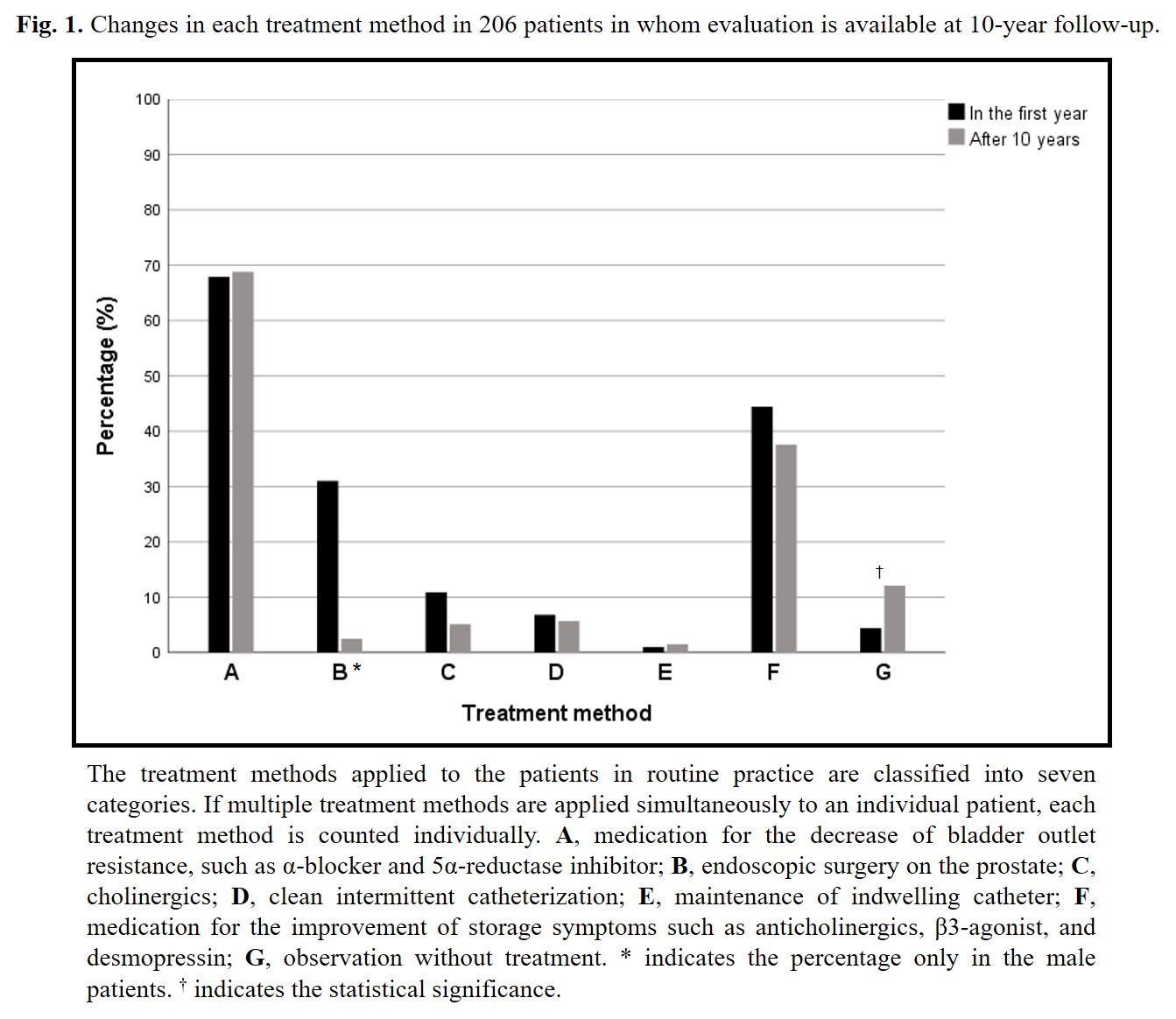Back
Poster, Podium & Video Sessions
Podium
PD38: Urodynamics/Lower Urinary Tract Dysfunction/Female Pelvic Medicine: Non-neurogenic Voiding Dysfunction II
PD38-02: 10-year follow-up observation of idiopathic detrusor underactivity in the elderly living in community: Treatment and urodynamic changes
Sunday, May 15, 2022
7:10 AM – 7:20 AM
Location: Room 244
Seong Jin Jeong*, Seongnam, Korea, Republic of, Ji Seok Kim, Seoul, Korea, Republic of, Sang Hun Song, Hakju Kim, Jin Hyuck Kim, Changhee Ye, Seongnam, Korea, Republic of, Sang Wook Lee, Jeong Hyun Kim, Chuncheon, Korea, Republic of, Hwanik Kim, Seongnam, Korea, Republic of
- SJ
Podium Presenter(s)
Introduction: Detrusor underactivity (DU) is not a rare voiding dysfunction in the elderly patients, but there is a lack of research on the natural history of disease and the characteristics of the use of each treatment method, which hinders the establishment of a comprehensive understanding of the disease. We sought to identify the characteristics of the use of each treatment method and urodynamic changes over time in these patients.
Methods: A population of 327 elderly patients with lower urinary tract symptoms (LUTS) aged over 65 years who had been diagnosed with idiopathic DU were prospectively followed up over 10 years. Treatment methods administered in the first year and at 10 years after diagnosis were compared, and changes in LUTS, voiding efficacy, and urodynamic indexes were evaluated.
Results: At 10-year follow-up, evaluation on the treatment methods was performed in 206 (63.0%) patients. After 10 years, there was no significant difference in the rate of use of medication for the decrease of bladder outlet resistance, but the use of medication for storage symptoms, cholinergics, and clean intermittent catheterization tended to decrease. On the other hand, the number of observation cases increased significantly to 12.1% (Fig. 1). The storage and voiding score of the International Prostate Symptom Score tended to deteriorate. Free maximum flow rate also showed a tendency to decrease from 8.6 mL/s to 7.4 mL/s, and free post-void residual (PVR) volume showed a significant deterioration from 78.2 mL to 122.3 mL. In male patients, bladder contractility index (BCI) deteriorated significantly from 77.5 to 61.7.
Conclusions: This study is the first to follow up a cohort of the elderly diagnosed with idiopathic DU over 10 years. The medications for storage symptoms as well as voiding symptoms were often used and free PVR and BCI showed a significant deterioration despite of various treatments. DU is considered a disease that progresses slowly and worsens.
Source of Funding: None

Methods: A population of 327 elderly patients with lower urinary tract symptoms (LUTS) aged over 65 years who had been diagnosed with idiopathic DU were prospectively followed up over 10 years. Treatment methods administered in the first year and at 10 years after diagnosis were compared, and changes in LUTS, voiding efficacy, and urodynamic indexes were evaluated.
Results: At 10-year follow-up, evaluation on the treatment methods was performed in 206 (63.0%) patients. After 10 years, there was no significant difference in the rate of use of medication for the decrease of bladder outlet resistance, but the use of medication for storage symptoms, cholinergics, and clean intermittent catheterization tended to decrease. On the other hand, the number of observation cases increased significantly to 12.1% (Fig. 1). The storage and voiding score of the International Prostate Symptom Score tended to deteriorate. Free maximum flow rate also showed a tendency to decrease from 8.6 mL/s to 7.4 mL/s, and free post-void residual (PVR) volume showed a significant deterioration from 78.2 mL to 122.3 mL. In male patients, bladder contractility index (BCI) deteriorated significantly from 77.5 to 61.7.
Conclusions: This study is the first to follow up a cohort of the elderly diagnosed with idiopathic DU over 10 years. The medications for storage symptoms as well as voiding symptoms were often used and free PVR and BCI showed a significant deterioration despite of various treatments. DU is considered a disease that progresses slowly and worsens.
Source of Funding: None


.jpg)
.jpg)